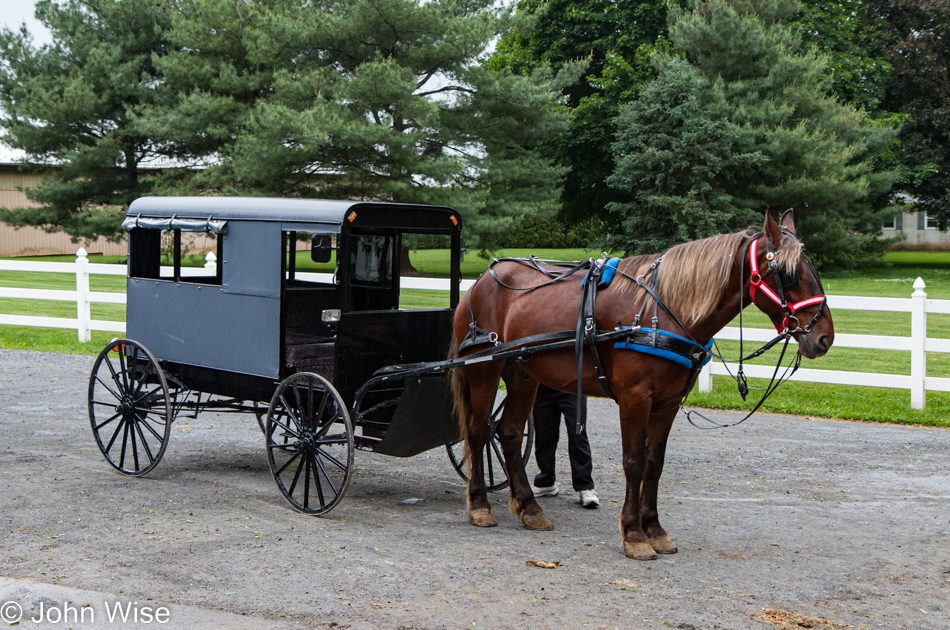
The blog posts of the previous 14 days were all updated in August 2022 to include more photos. Going from 3 to 5 photos to 2 dozen or more per entry, such as with this one, is common. As I’ve explained before, years ago, the bandwidth constraints made it difficult to include all the photos that I might have wanted. The good thing about these other posts is that while there were a minimal number of photos, I had written the narrative of what was happening over the course of the day, so while you may not have seen a photo of fireworks at Niagara Falls, I’d written of them. That’s not the case regarding this 15th day of our North Atlantic States vacation with my mother-in-law, Jutta Engelhardt. There were no photos and nothing written for this day, and I have no idea why not, but when I started moving sequentially through the day, I was surprised by this omission. So what follows is derived from the images, the itinerary that I still have, and the memories of Caroline and me that have been brought back to these days from the processes of updating the posts from the days prior.
Abe’s Buggy Rides in Bird-in-Hand, Pennsylvania, was our first order of business after the obligatory taking care of breakfast. Seems that we’ll be out on the town in the limousine of buggies.
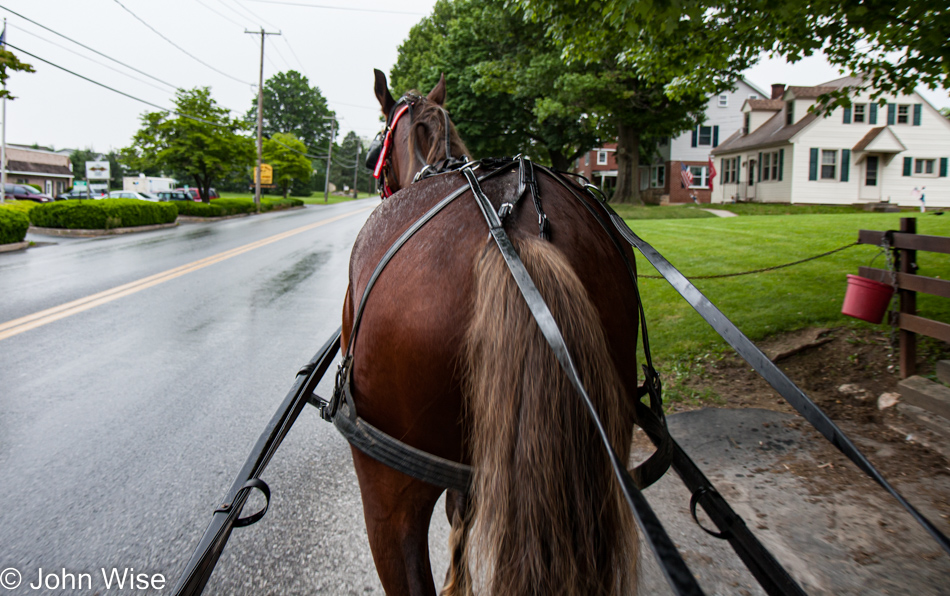
How can one move through the communities of the Amish, see them going about their day using horse and buggy, and not wonder what it must be like to slow things down and travel in a way that is reminiscent of another age? I suppose if you grew up here and you found these traditional people tedious or annoying as you wished to pass them on your way to work or school, then you probably have no romantic ideas of such an experience, but I did, and today here we are learning firsthand what’s it’s like to venture out behind a horse.
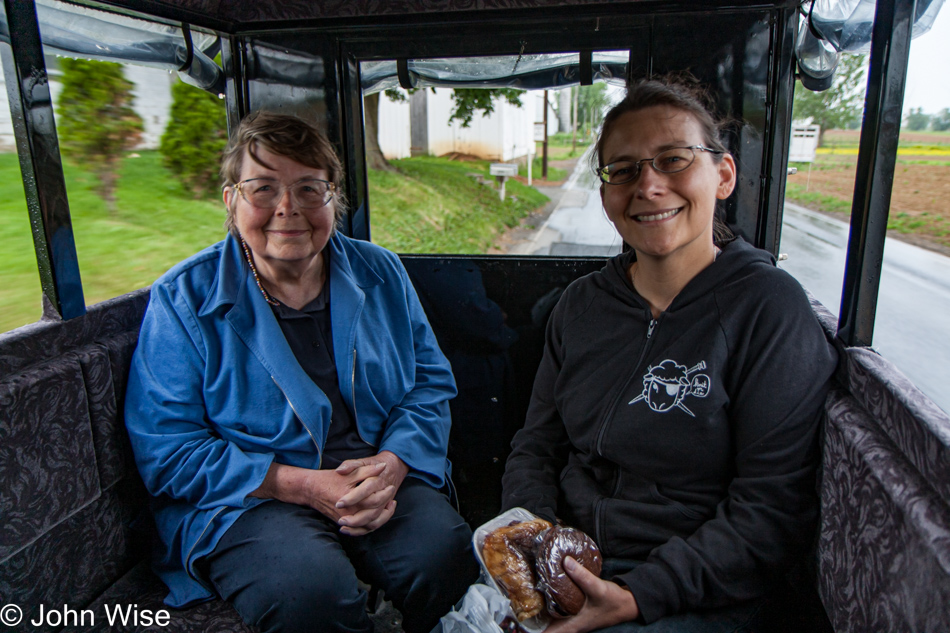
Our coachman supplied pastries this morning in case we did not have time for breakfast. nice touch. Among others, Caroline is holding a whoopie pie for later consumption. As you can see, it’s quite comfortable back here. I can almost hear the cynic who says, “Tell me how much you enjoy this ride come January when it’s snowing.” Sorry, cynic, I’m opting for a life of self-delusional happiness where smiles, pastries, and love are readily available and always within reach.
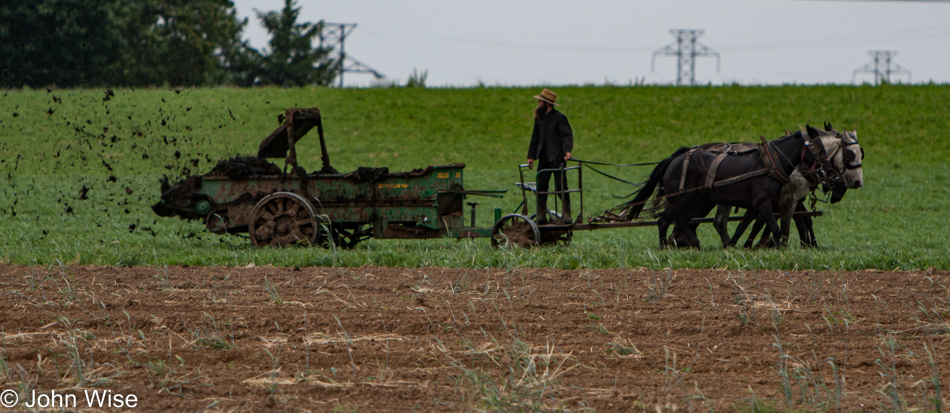
While the Amish may eschew gas and electric devices and machines, it doesn’t mean they aren’t crafty when it comes to dealing with the needs of life. I was so impressed with this manure spreader I had to stop to ensure I got a proper photo of a horse and gear-driven contraption of poop flinging.
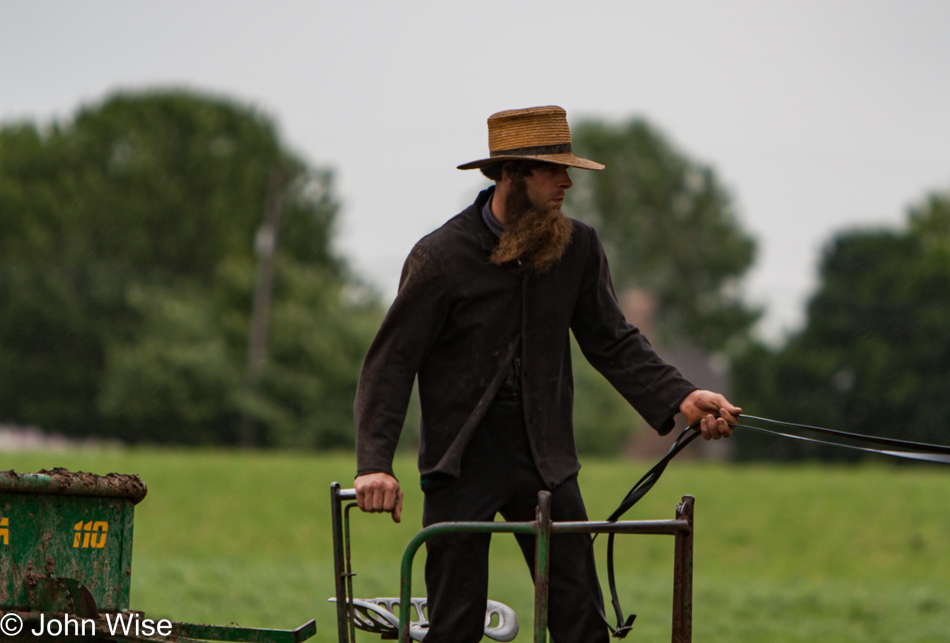
Utility and symbiosis with the task at hand, be it a farmer, a father, or a member of his community, you gotta respect that. Towards the end of our buggy ride, our guides stopped at a sewing workshop, allowing us to take a look at another type of Amish ingenuity: air-powered treadle sewing machines.
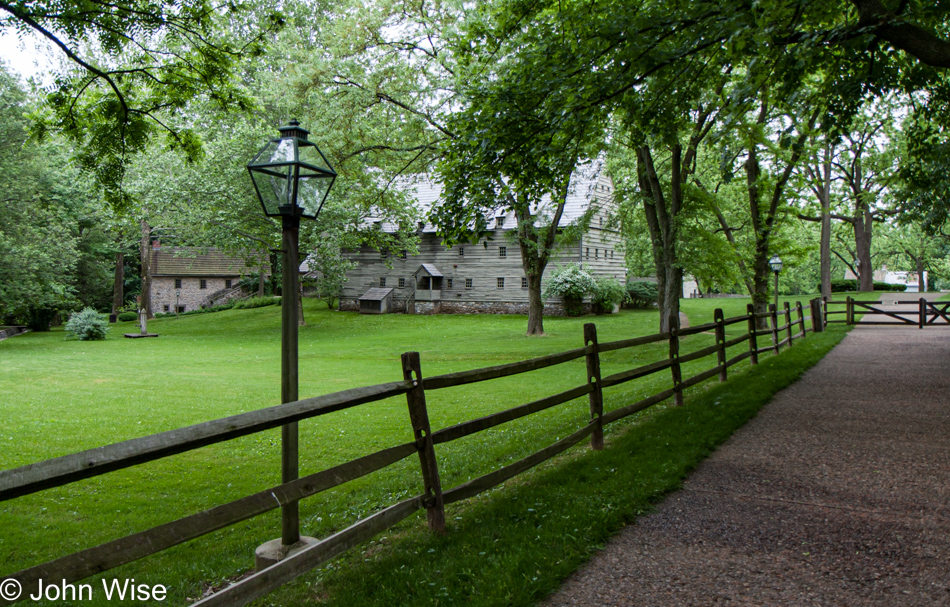
Caroline and I have been here before; on our first cross-country trip in 2000, we arrived at Ephrata Cloister well before they opened, and so we had to skip a proper visit. We were not going to miss it this time.
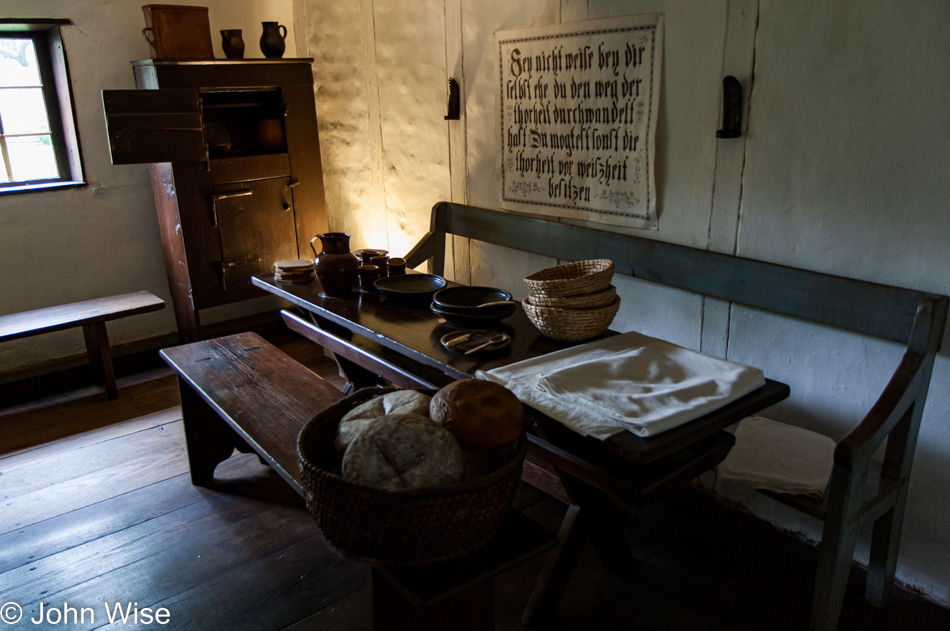
Nearly ten years ago, I wrote, “Conrad Beissel, a man of German descent, was Ephrata’s founder and established this corner of Pennsylvania as somewhere he felt he could live as a hermit. By the early 1750s, Beissel was no longer alone, having attracted nearly 80 others who chose the monastic life of celibacy and self-discipline.”
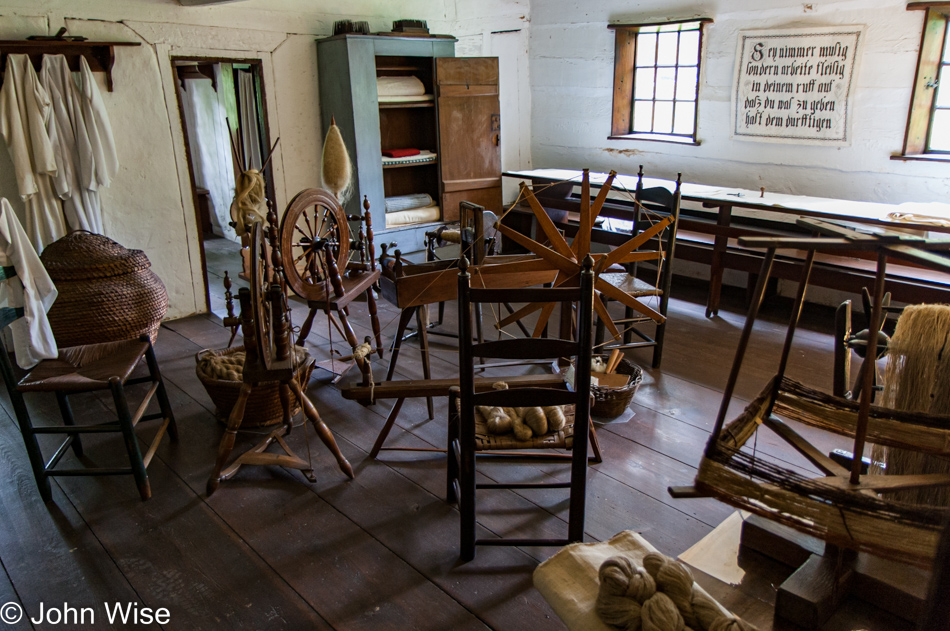
Two years prior to this visit, Caroline attended a 4-day workshop in Harveyville, Kansas, called Yarn School, and now all of this equipment used in making yarn is looking familiar. A year after our visit, Caroline would acquire her first loom, and the process of making fabric would become part of her practice in the fiber arts.
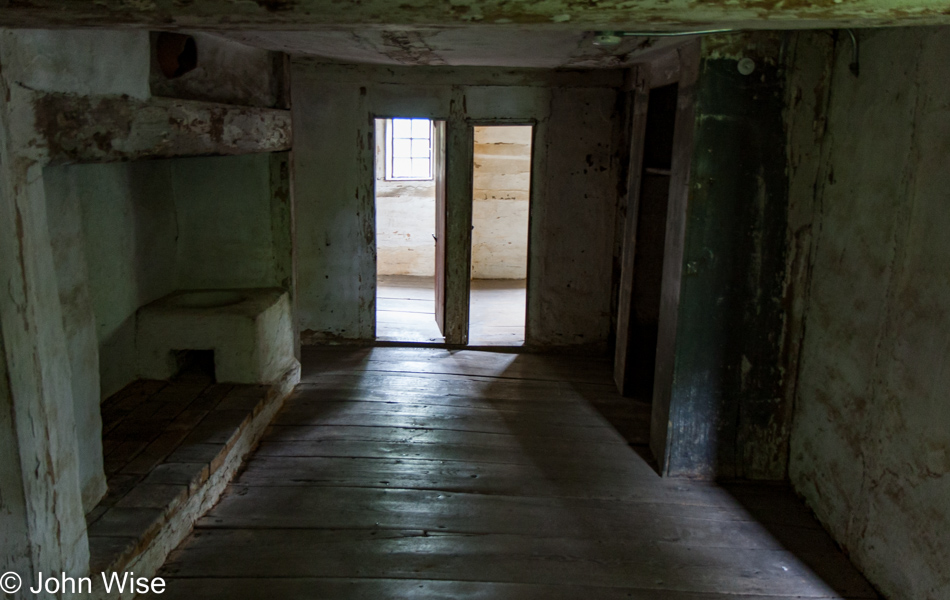
Our tour brought us into an unrestored section of the cloister, allowing us to get a sense of the condition of the place prior to the efforts to save this tiny corner of American history. If you look at the photo three images below this one, you’ll see what a restored kitchen looks like as compared to this one.
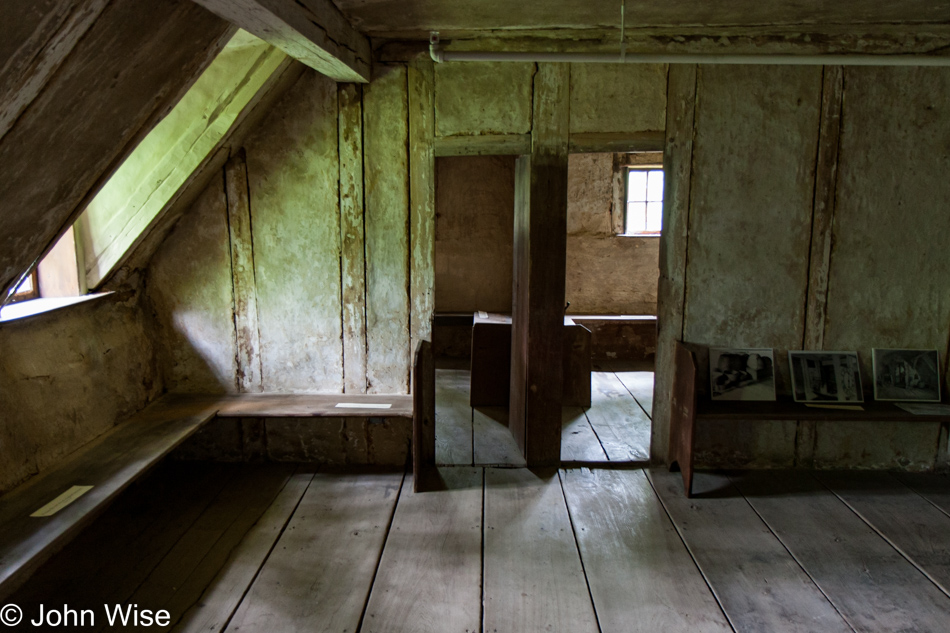
Many of the rooms we looked at didn’t have doors and instead featured curtains because, living a life of celibacy, what need would there be for privacy?
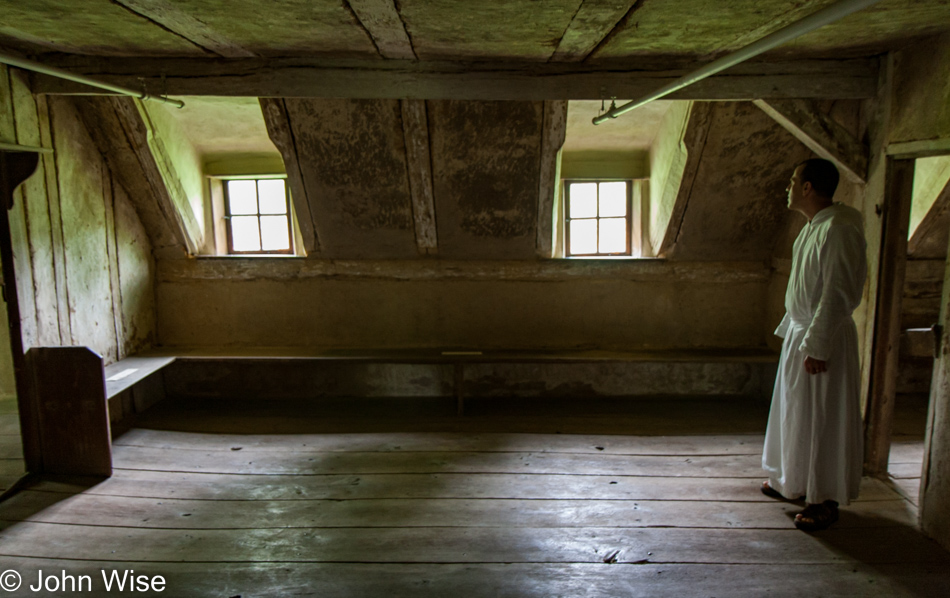
Conrad Beissel died in 1768, the last celibate practitioner passed in 1813, and the church as it was ceased to operate in 1934. It wasn’t long after that that the Pennsylvania Historical and Museum Commission took over the buildings and grounds to preserve things.
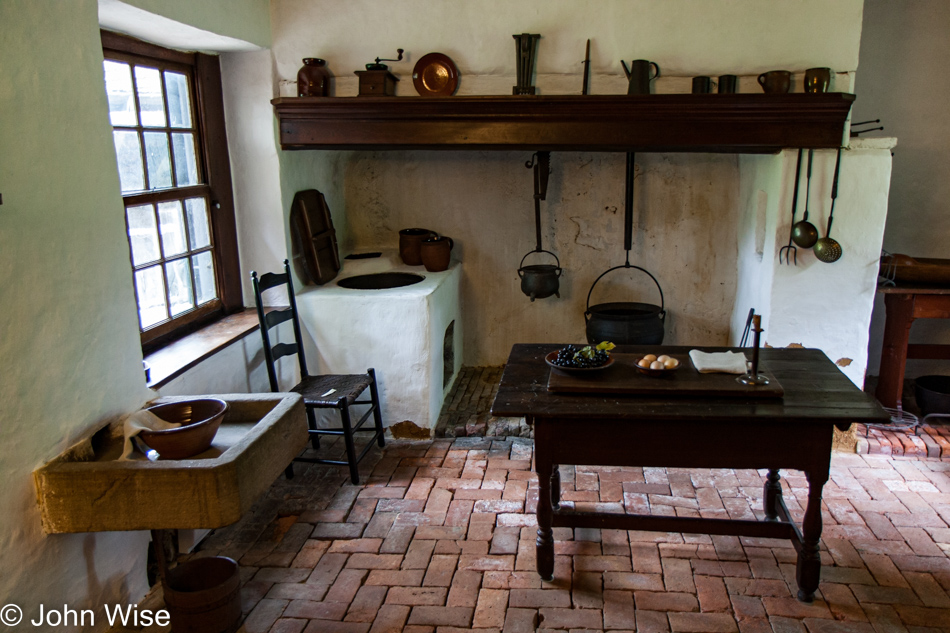
A restored kitchen.
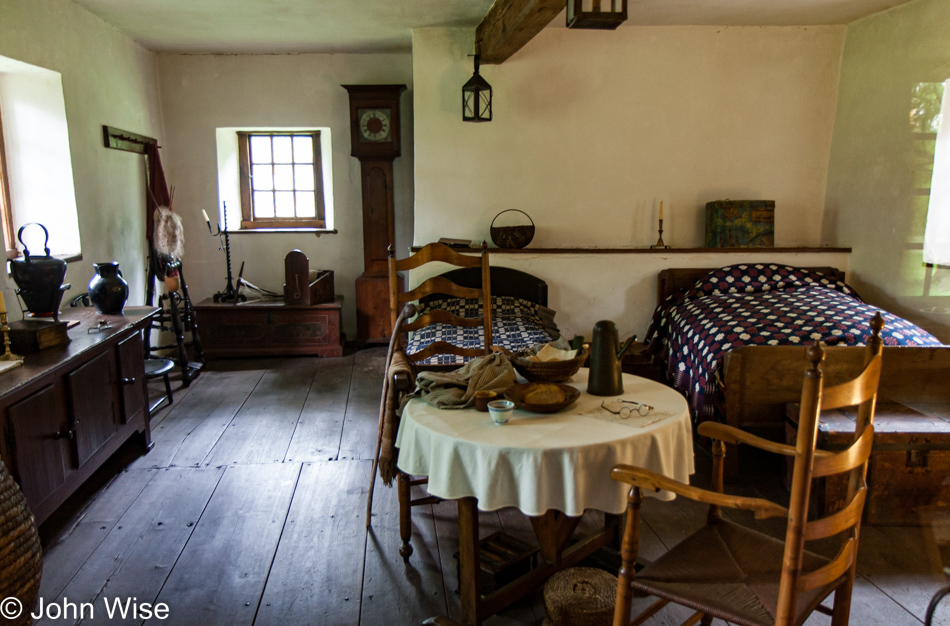
This looks a bit too luxurious for the celibate members, so I’m guessing that this was the living quarters of one of the “householders” who oversaw the operations of the order so its members could devote themselves to the life of an ascetic.
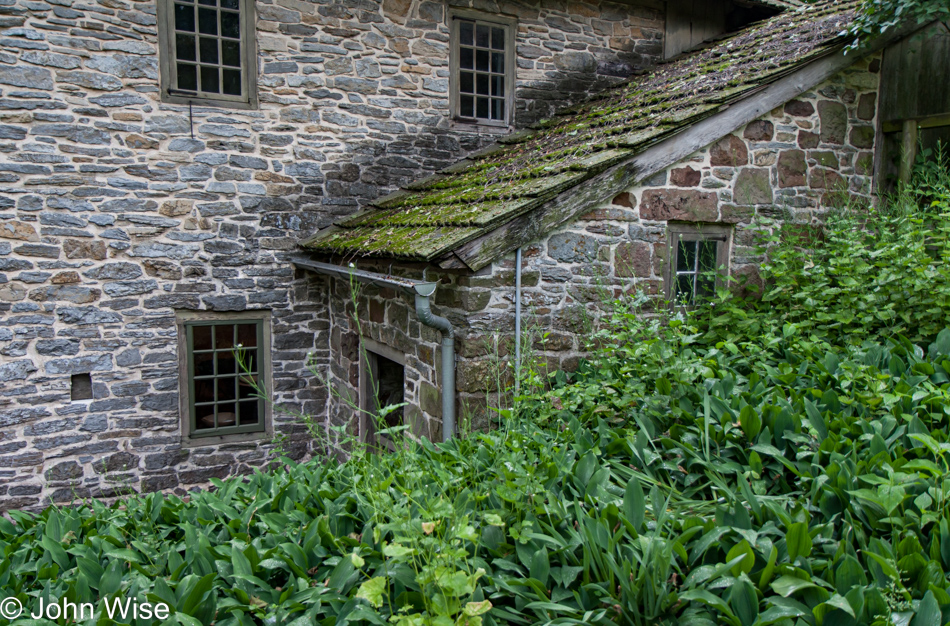
Maybe someday, holidays will be able to be taken in living history settings where one could live as a monk for a week, a prisoner in an old jail, or as an Amish farmer.
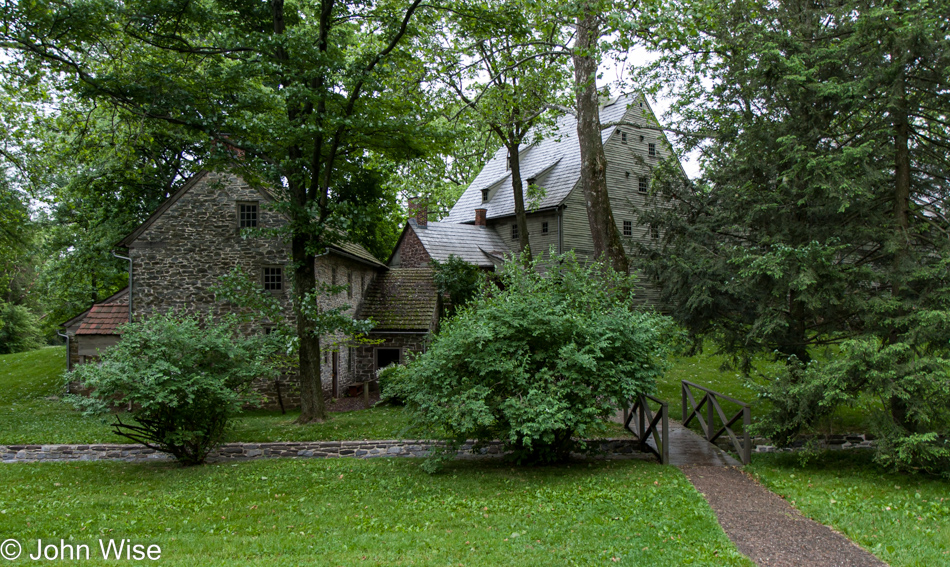
The grounds here are beautiful and are what really instilled in us the desire to one day return.
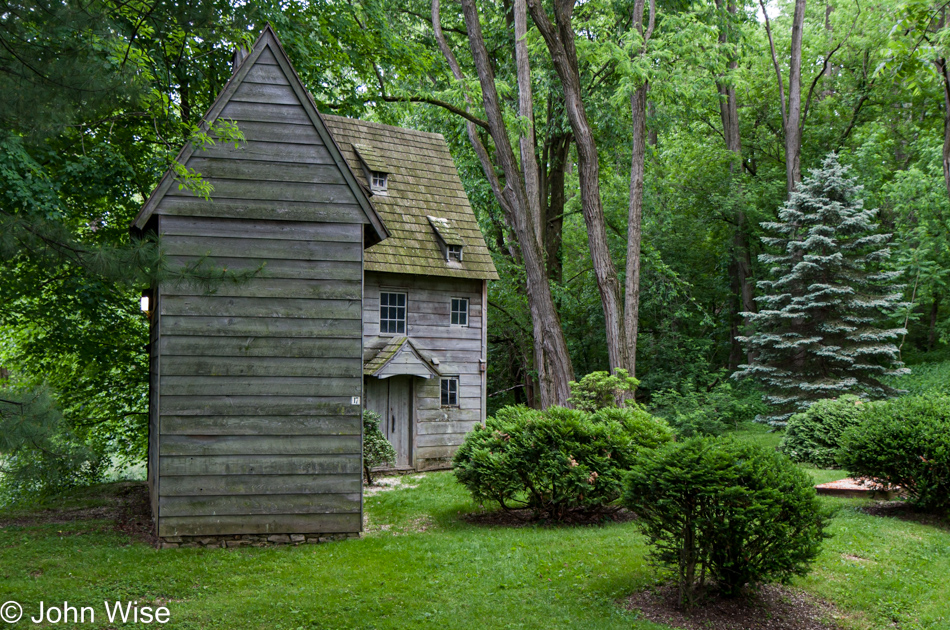
I think there’s an underlying thought that maybe Caroline and I could have adapted to this kind of lifestyle as the isolation felt in our youth, led both of us to, at times, believe we might always be alone, so why not take it to an extreme? For her, it was a nunnery, and for me, it was the philosopher’s cave or mountaintop.
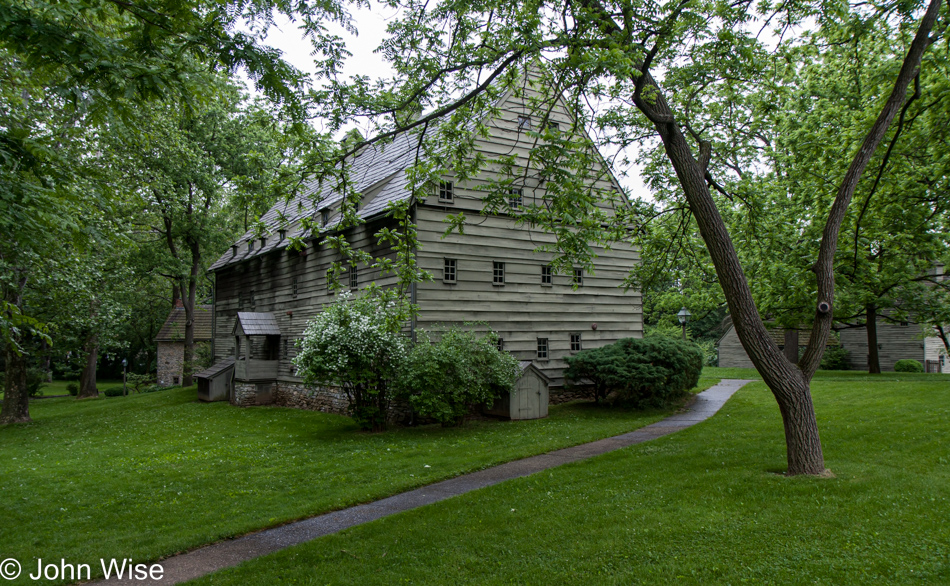
Next time we visit, it’ll have to be on a sunny day.
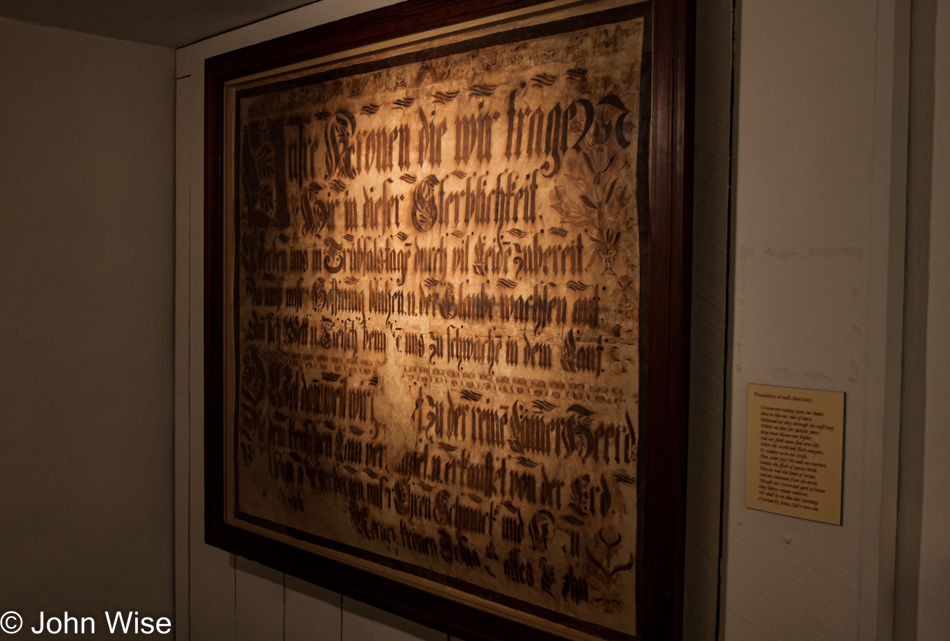
Time to leave.
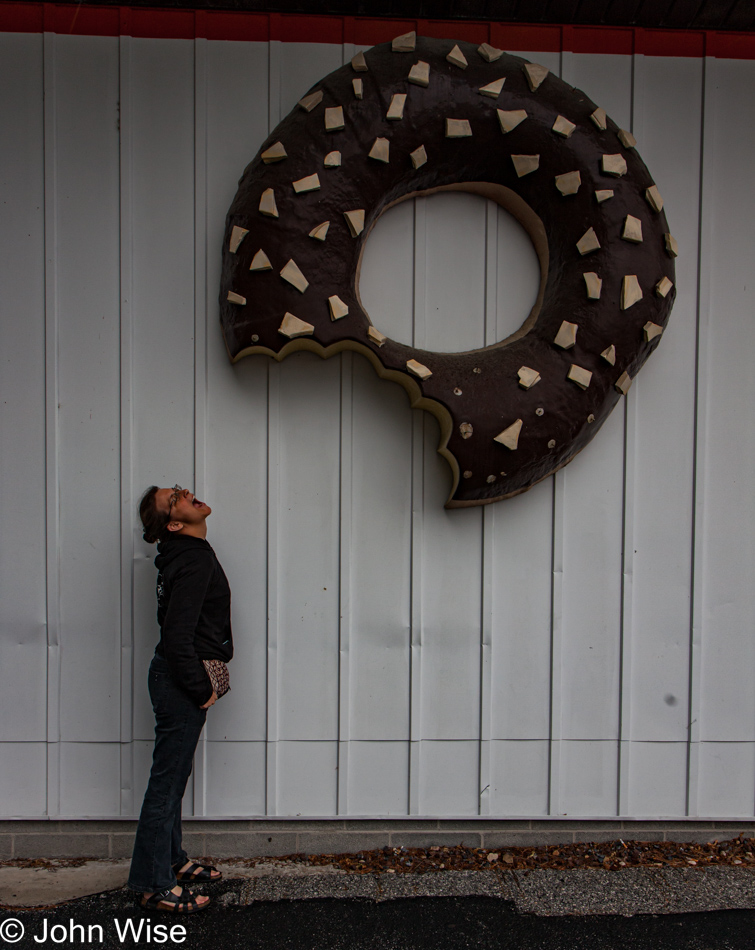
About to turn in the rental car here in Baltimore, Maryland, and go home.

Shortly after departure, we were flying over some bad weather.

Just as Howard Hughes learned while he was making films, clouds make for great dramatic skies.

Rain falling but never reaching the earth.
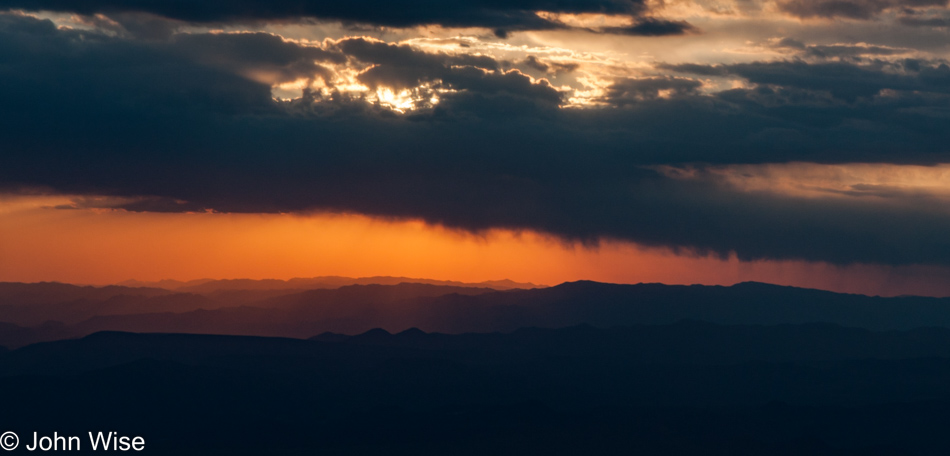
This is what happens when you can’t pick just one sunset photo…

…because they keep getting better, like our wonderful vacations.